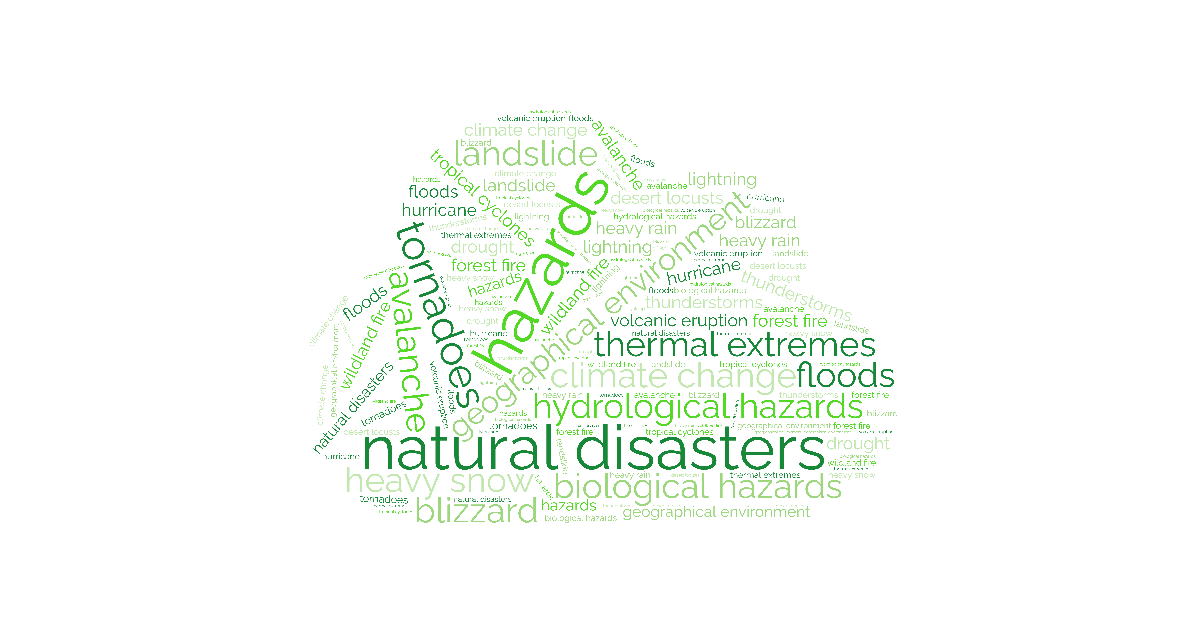Natural Disasters and Hazards in the Geographical Environment
A special issue of Atmosphere (ISSN 2073-4433). This special issue belongs to the section "Biosphere/Hydrosphere/Land–Atmosphere Interactions".
Deadline for manuscript submissions: closed (20 March 2023) | Viewed by 23275

Special Issue Editor
Interests: physical geography; natural hazards; rainfall erosivity; climate extremes; climatology; meteorology
Special Issues, Collections and Topics in MDPI journals
Special Issue Information
Dear Colleagues,
Natural hazards mostly occur as sudden, disastrous events with a high possibility of causing harm to various aspects of human life. Both natural hazard research and natural disaster research in geography have a long history and have evolved to incorporate the complexities of physical and human environments, as well as their interactions. Our understanding of the dimensions of hazards continues to be ever changing. The study of these phenomena strives to encompass all casualties in the environment, especially within the geosphere.
While natural hazards present a threat to humans and their environment, they do not necessarily result from natural and environmental processes and causes alone. Processes of interaction between different systems also bring about hazards. In the era of pronounced climate variability, understanding and predicting future hazard variability and occurrence patterns, as well as consequences in the geographical environment, are scientific challenges crucial to the development and implementation of sustainable management practices and policies.
This Special Issue of Atmosphere encompasses papers that present interdisciplinary concepts, methods, and case studies in the prediction, characterization, monitoring, mapping, communication, risk management, and mitigation of hydro-meteorological hazards and disasters (extreme climate events, wildfires, droughts, floods, mass movements (wet), rainfall erosivity, etc.). All types and sub-types of hazards and disasters associated with the atmosphere, hydrosphere, and land, as well as those induced by climate change and variability, will be considered. The main topics of interest include (but are not limited to) the environmental, socio-economic, and health aspects of hydro-meteorological hazards and disasters in various geographical settings, quantitative and qualitative hazard and risk assessment, multi-hazard risk assessment, multi-vulnerability risk assessment, multi-hazard early warning systems, advances in hazard and disaster visualization, applications of new techniques in hazard and disaster research, and the spatial–temporal effects on hazard and risk assessment at local to regional scales.
Dr. Tin Lukić
Guest Editor
Manuscript Submission Information
Manuscripts should be submitted online at www.mdpi.com by registering and logging in to this website. Once you are registered, click here to go to the submission form. Manuscripts can be submitted until the deadline. All submissions that pass pre-check are peer-reviewed. Accepted papers will be published continuously in the journal (as soon as accepted) and will be listed together on the special issue website. Research articles, review articles as well as short communications are invited. For planned papers, a title and short abstract (about 100 words) can be sent to the Editorial Office for announcement on this website.
Submitted manuscripts should not have been published previously, nor be under consideration for publication elsewhere (except conference proceedings papers). All manuscripts are thoroughly refereed through a single-blind peer-review process. A guide for authors and other relevant information for submission of manuscripts is available on the Instructions for Authors page. Atmosphere is an international peer-reviewed open access monthly journal published by MDPI.
Please visit the Instructions for Authors page before submitting a manuscript. The Article Processing Charge (APC) for publication in this open access journal is 2400 CHF (Swiss Francs). Submitted papers should be well formatted and use good English. Authors may use MDPI's English editing service prior to publication or during author revisions.
Keywords
- natural hazards and disasters
- hydro-meteorological hazard assessment
- climate change impacts
- socio-economic impacts
- vulnerability of weather-dependent economic sectors
- risk analysis and management
- land–climate interactions
- spatial–temporal analysis
- mapping and visualization
- early warning systems
Benefits of Publishing in a Special Issue
- Ease of navigation: Grouping papers by topic helps scholars navigate broad scope journals more efficiently.
- Greater discoverability: Special Issues support the reach and impact of scientific research. Articles in Special Issues are more discoverable and cited more frequently.
- Expansion of research network: Special Issues facilitate connections among authors, fostering scientific collaborations.
- External promotion: Articles in Special Issues are often promoted through the journal's social media, increasing their visibility.
- e-Book format: Special Issues with more than 10 articles can be published as dedicated e-books, ensuring wide and rapid dissemination.
Further information on MDPI's Special Issue polices can be found here.





